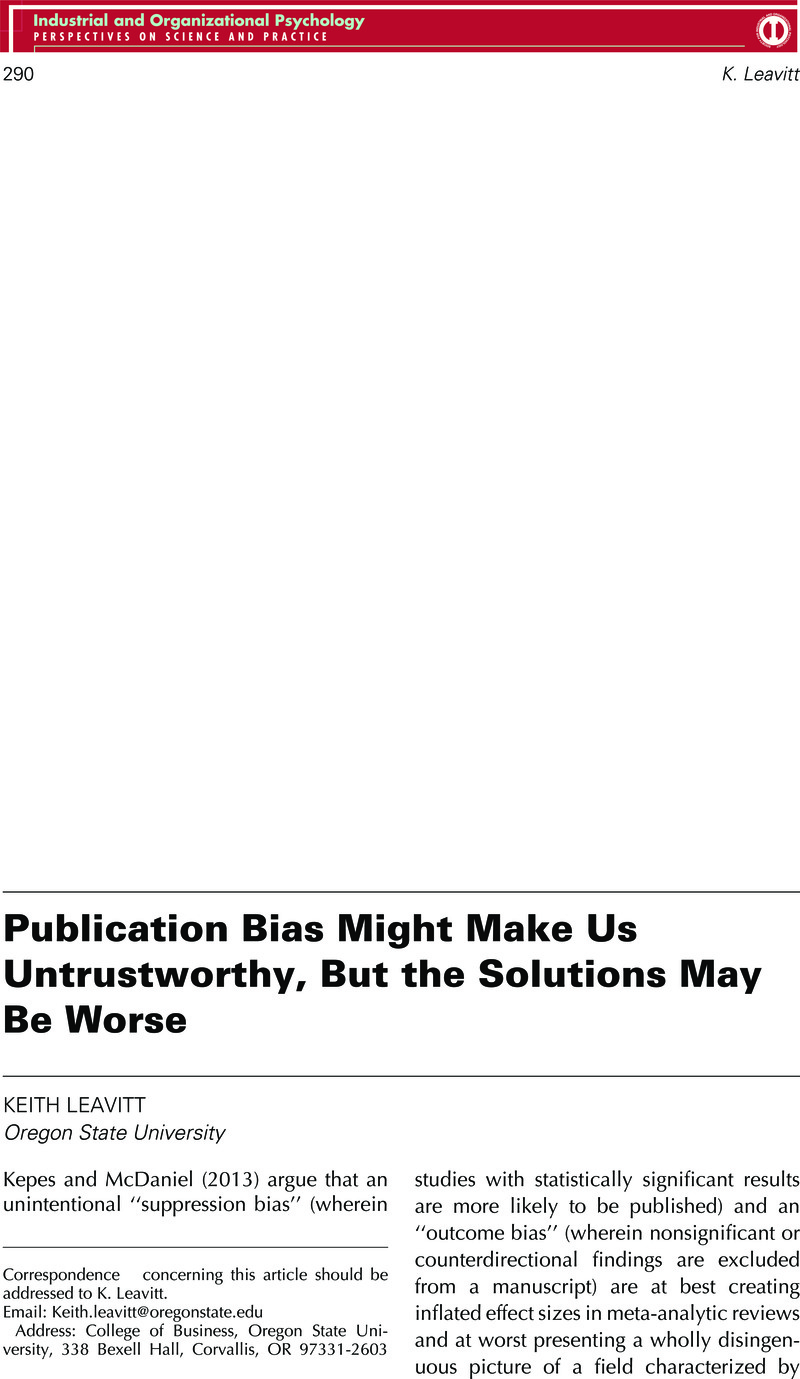Crossref Citations
This article has been cited by the following publications. This list is generated based on data provided by Crossref.
Landis, Ronald S.
James, Lawrence R.
Lance, Charles E.
Pierce, Charles A.
and
Rogelberg, Steven G.
2014.
When is Nothing Something? Editorial for the Null Results Special Issue of Journal of Business and Psychology.
Journal of Business and Psychology,
Vol. 29,
Issue. 2,
p.
163.
Banks, George C.
Field, James G.
Oswald, Frederick L.
O’Boyle, Ernest H.
Landis, Ronald S.
Rupp, Deborah E.
and
Rogelberg, Steven G.
2019.
Answers to 18 Questions About Open Science Practices.
Journal of Business and Psychology,
Vol. 34,
Issue. 3,
p.
257.
Patall, Erika A.
2021.
Implications of the open science era for educational psychology research syntheses.
Educational Psychologist,
Vol. 56,
Issue. 2,
p.
142.
Toth, Allison A.
Banks, George C.
Mellor, David
O’Boyle, Ernest H.
Dickson, Ashleigh
Davis, Daniel J.
DeHaven, Alex
Bochantin, Jaime
and
Borns, Jared
2021.
Study Preregistration: An Evaluation of a Method for Transparent Reporting.
Journal of Business and Psychology,
Vol. 36,
Issue. 4,
p.
553.
Castille, Christopher M.
Kreamer, Liana M.
Albritton, Betsy H.
Banks, George C.
and
Rogelberg, Steven G.
2022.
The Open Science Challenge: Adopt One Practice that Enacts Widely Shared Values.
Journal of Business and Psychology,
Vol. 37,
Issue. 3,
p.
459.
Dowdy, Art
Hantula, Donald A.
Travers, Jason C.
and
Tincani, Matt
2022.
Meta-Analytic Methods to Detect Publication Bias in Behavior Science Research.
Perspectives on Behavior Science,
Vol. 45,
Issue. 1,
p.
37.
Leone, Karen L.
Lepper, Bradley T.
Eren, Metin I.
and
Pansing, Linda L.
2022.
Late Holocene radiocarbon dates for the Welling site (33CS441): A multi-component site in Coshocton County, Ohio.
Journal of Archaeological Science: Reports,
Vol. 41,
Issue. ,
p.
103345.
Strah, Nicole
Rupp, Deborah E.
Shao, Ruodan
King, Eden
and
Skarlicki, Daniel
2024.
Why have we not detected gender differences in organizational justice perceptions?! An evidenced‐based argument for increasing inclusivity within justice research.
Journal of Organizational Behavior,





